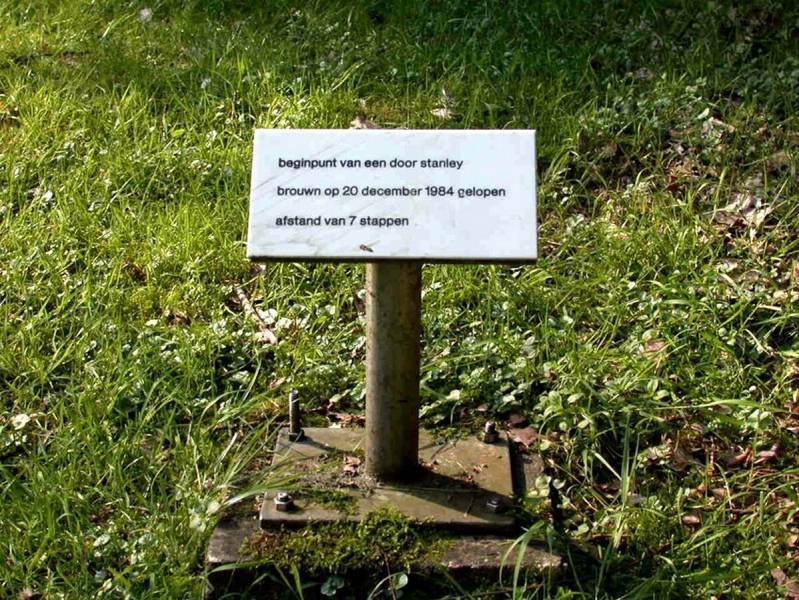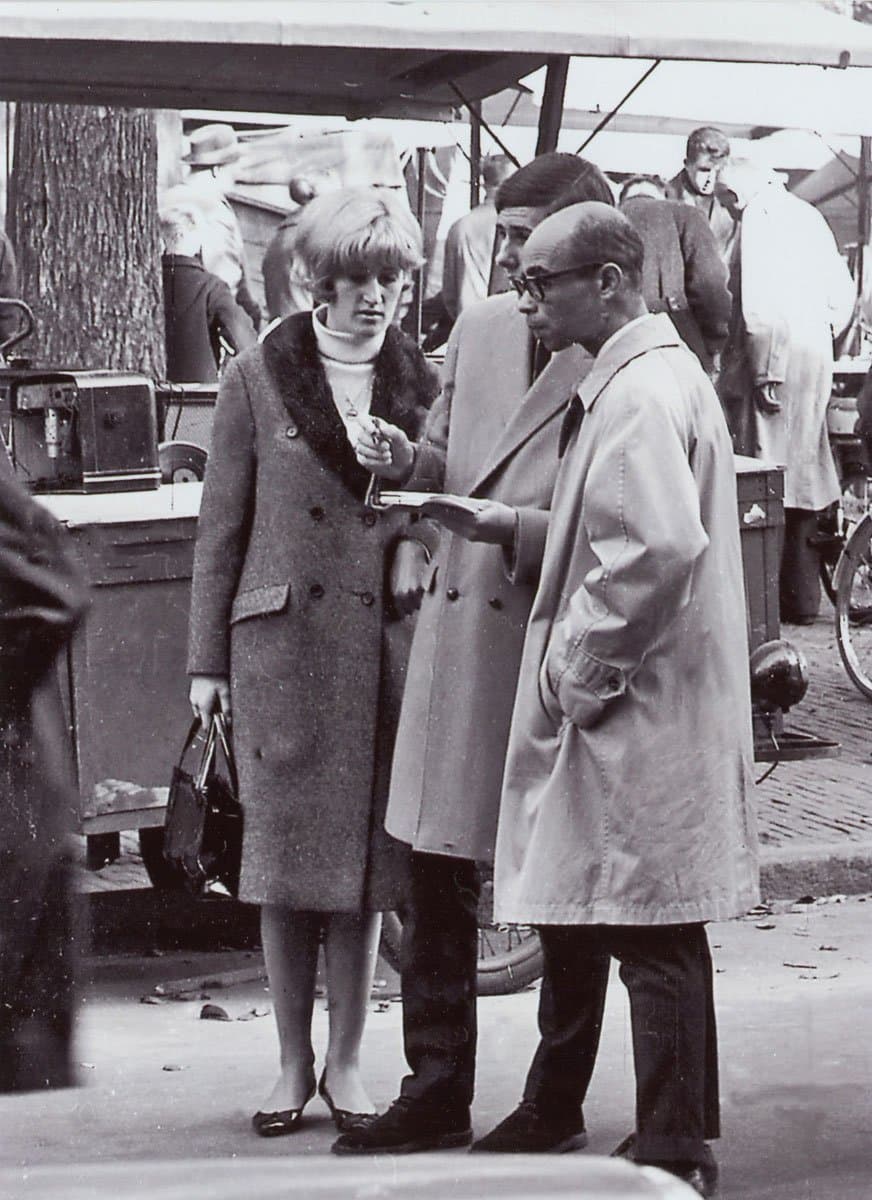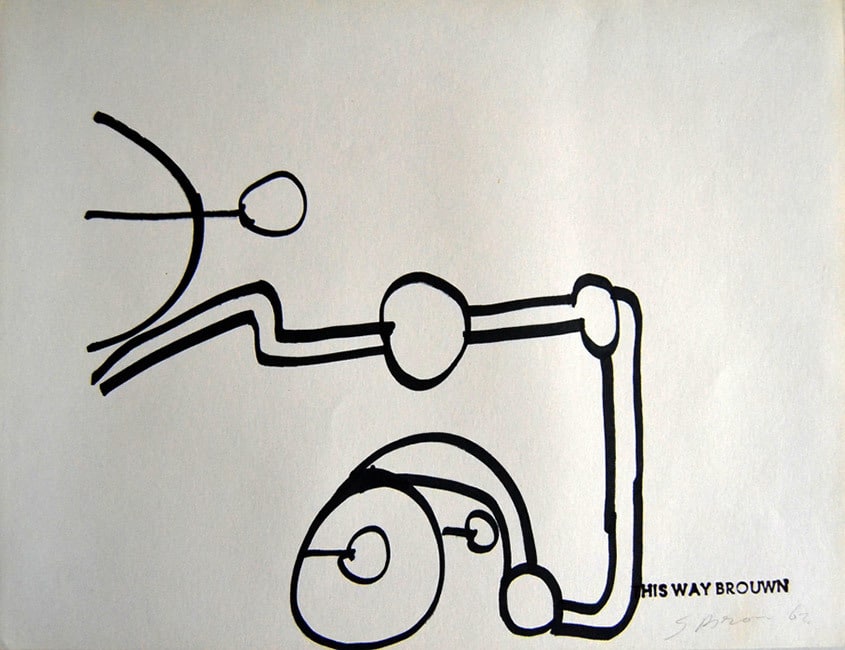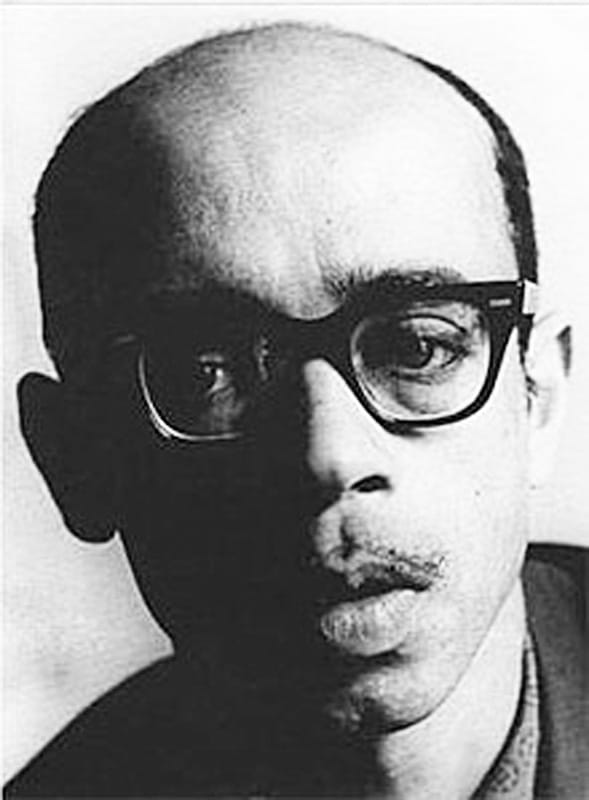Stanley brouwn (1935-2017) was the first artist who claimed walks as art. The Surinam-born Dutch artist developed an oeuvre based on measuring and bridging distances. His conceptual works were often presented in book form. But in the sculpture park of the Kröller-Möller museum, you can walk in brouwn’s footsteps.
You could easily miss the little metal sign. It was planted next to a meandering path in the Kröller-Müller sculpture park, near the Dutch town of Arnhem. “starting point of a walk of 1206 steps by stanley brouwn on 20 december 1984,” read the text on the sign. No capitals. No explanation. Curious, you might think.
Continue down the path and you come across another almost identical sign. You might initially expect it to be a sign marking the end of the walk. But it isn’t so simple. “starting point of a walk of seven steps by stanley brouwn on 20 december 1984,” it reads. And there are other signs scattered through the park, ten in all, each one marking the starting point of a different walk.
 Sign saying "starting point of a walk of seven steps by stanley brouwn on 20 december 1984"
Sign saying "starting point of a walk of seven steps by stanley brouwn on 20 december 1984"© Kröller-Müller Museum, Otterlo
Not many people notice the signs. They are somewhat lost next to the big sculptures by Jean Dubuffet and Sol LeWitt. But you might be curious to know something about the artist stanley (no capitals) brouwn. And where his walks took him on that cold winter day in 1984. You could try walking 1206 steps to find the answer. But how would you know the direction?
 A rare photograph by Igno Cuypers of stanley brouwn asking passersby for directions; he then stamped their drawn map 'this way brouwn'.
A rare photograph by Igno Cuypers of stanley brouwn asking passersby for directions; he then stamped their drawn map 'this way brouwn'.Lower case stanley brouwn was a conceptual artist with Dutch and Suriname roots. He started to explore walking as an art form in 1960 when he handed out cards inviting people to visit all the shoe shops in Amsterdam. In his next project, he scattered blank brown paper sheets on Amsterdam pavements and waited for people to step on them. He gathered up the sheets to create a collection titled footsteps on paper.
Two years later, he asked random people in Amsterdam to draw directions to particular locations. He published the scribbled maps in a book title this way brouwn.
 this way brouwn, 1962
this way brouwn, 1962© Konrad Fischer Galerie
In 1971, he created another artist’s book titled A Distance of 366 Steps in which he recorded the number of steps he had walked with scientific precision. ‘Each metre and millimetre I walk possesses its own identity,’ he explained once. ‘My work brings a new meaning to the concept of distance.’
His intense interest in walking is reflected in the titles of his works – A walk through a grass field, A walk during one week, A walk from a to b.
 stanley brouwn (1935-2017)
stanley brouwn (1935-2017)Stanley brouwn refused to give interviews. You won’t find out much about him on Wikipedia apart from one obituary in Dutch. I have never found a photograph of him. Not one. ‘The presentation is the material,’ he once explained.
He left behind very little material, apart from scraps of paper, a book or two, and those ten metal signs stuck in the grass in the winter of 1984.
‘To be clear,’ he explained in 1971, ‘everything I have ever done or will ever do can be summed up in one sentence: people walk on planet earth.’
So that’s as clear as it gets.












